Yes, you still have time to get some reading done before the (ugh) end of summer. To help you get started, our latest roundup of noteworthy new books connected to the world of cinema features a packed lineup of gems. And there are even more recent books (including an epic list of new novels) that we will highlight in our next column this fall.
Before we dive in, though, a note regarding the late William Friedkin, who is referenced in two entries below: I would encourage readers to check out his 2013 memoir, The Friedkin Connection. He was, as you would expect, remarkably candid about his ups and downs, making for one of the more forthright filmmaker memoirs ever written.
The Exorcist Legacy: 50 Years of Fear by Nat Segaloff (Citadel)
The world lost the aforementioned William Friedkin on August 7, and with his passing came a renewed appreciation for greats like The French Connection, Sorcerer, and, of course, The Exorcist. Ironically, just weeks after Freidkin’s death a restored version of the film is set to screen at the Venice Film Festival alongside his final film, The Caine Mutiny Court-Martial. In addition, David Gordon Green’s new Exorcist entry is set for release in October. However, there is simply no topping the original, and The Exorcist Legacy: 50 Years of Fear by Nat Segaloff thoroughly outlines the many reasons why. The book also chronicles the film’s complicated creation and topsy-turvy follow-ups on screens large and small. Many of the book’s most memorable quotes come from Friedkin, of course. Here is Friedkin on his decision to finally add some of the deleted scenes author William Peter Blatty had long wanted returned to the film, specifically a moment of dialogue between Fathers Karras and Merrin: “I really put it back for him, because I feel, and felt, that I owe him a lot. He wrote this thing, he created it, he gave it to me, and as I got older, I have become somewhat less arrogant and I felt that he should have the version of the film come out that he wanted.”
Burn It Down: Power, Complicity, and a Call for Change in Hollywood by Maureen Ryan (Mariner Books)
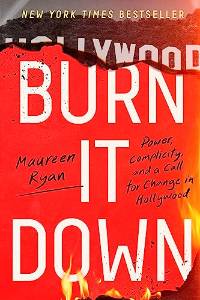
The most important book about the entertainment industry so far this year is Burn It Down. Maureen Ryan’s incendiary, deeply upsetting accounting of the systemic issues that foster abuse in Hollywood is a rarity––a text that could lead to real change. Ryan, currently a contributing editor at Vanity Fair, writes with passion and startling clarity. She finds maddening, downright shocking behavior in the writers’ room of Lost and behind the scenes of series like Sleepy Hollow and institutions like Saturday Night Live. The author finds no easy answers, sadly. “Here’s the magic solution to fixing all the terrible stuff: there isn’t one,” she writes. “So what do we do now? We burn it all down.”
The Last Action Heroes: The Triumphs, Flops, and Feuds of Hollywood’s Kings of Carnage by Nick de Semlyen (Crown)
If you grew up in the 1980s, the nostalgic delights of The Last Action Heroes will make your head spin with joy. However there is much more than nostalgia to be found in this study of the era in which Sylvester Stallone, Arnold Schwarzenegger, Chuck Norris, Jackie Chan, Dolph Lundgren, Steven Seagal, Jean-Claude Van Damme, and Bruce Willis won the hearts and minds of moviegoers. de Semlyen documents how and why figures like Stallone and Schwarzenegger, especially, were the right stars at the right time. “The bulging bodies of these stars, with their ammo belts, gleaming combat knives, and unflinching eyes, became the barometer for what it was to be a real man,” de Semlyen writes. This is a gloriously entertaining book filled with oodles of memorable anecdotes. (It’s hard to top the mental image of Van Damme and Seagal facing off at a Stallone house party in 1997. Yes, that actually happened.)
The Films of Michael Mann by Deryck Swan (Liverpool University Press)
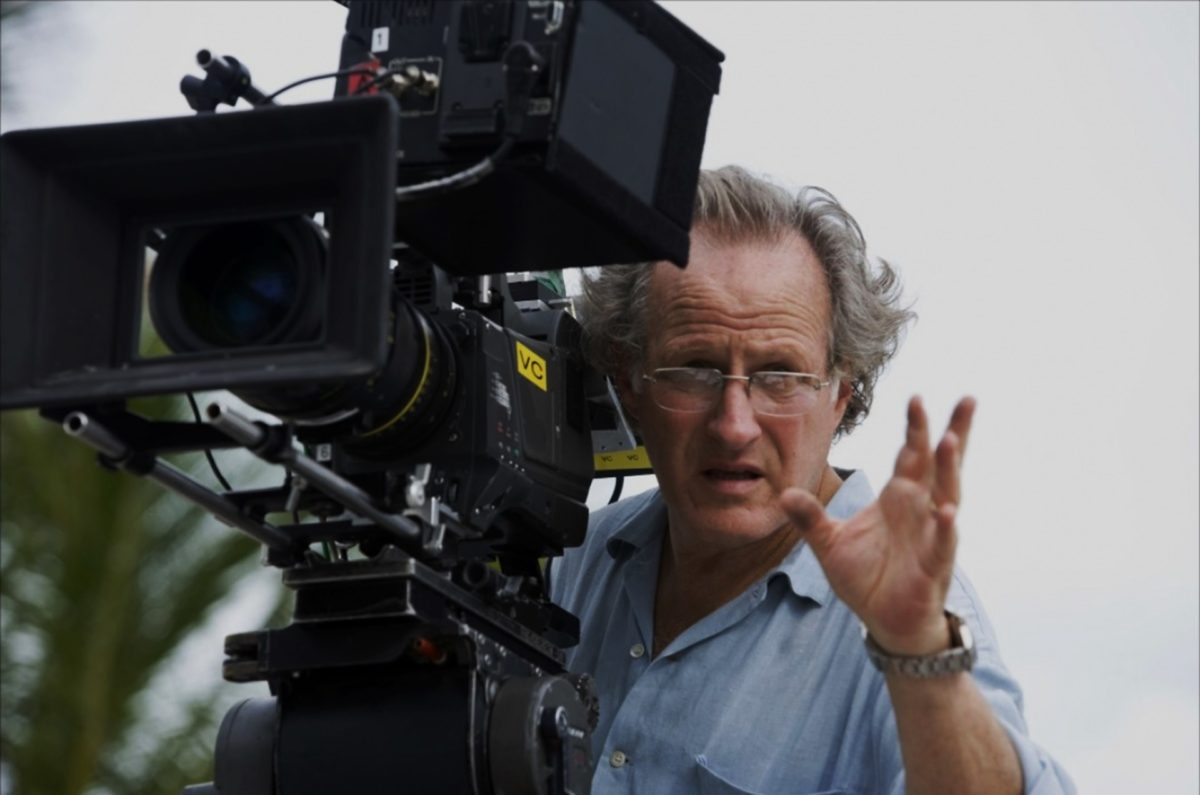
We have been in dire need of a new Michael Mann career overview for some time now. With the release of Mann’s Ferrari nearly upon us, the timing for The Films of Michael Mann, Deryck Swan’s first book, could not be better. As Swan puts it, Mann is “a film-making auteur with that certain tendency to leave a trail of stylistic and ideological bullet casings throughout his work.” Swan moves film by film, connecting each with a key theme (“Ali and Recreating History,” “The Keep and Stylisation”). He finds relevance in each bold, uncompromising step, starting with The Jericho Mile (which “introduced Mann’s fascination with the prison environment”) to the tragically underappreciated Blackhat (“a work that was perhaps too radical for even ardent fans”). In his introduction, the author states his hope for creating an “honest and satisfying account of this director and his work to date,” and I’m pleased to share that Swan has more than done so.
Do No Detonate Without Presidential Approval: Inspirations for Wes Anderson’s Asteroid City edited by Jake Perlin (Pushkin Press)
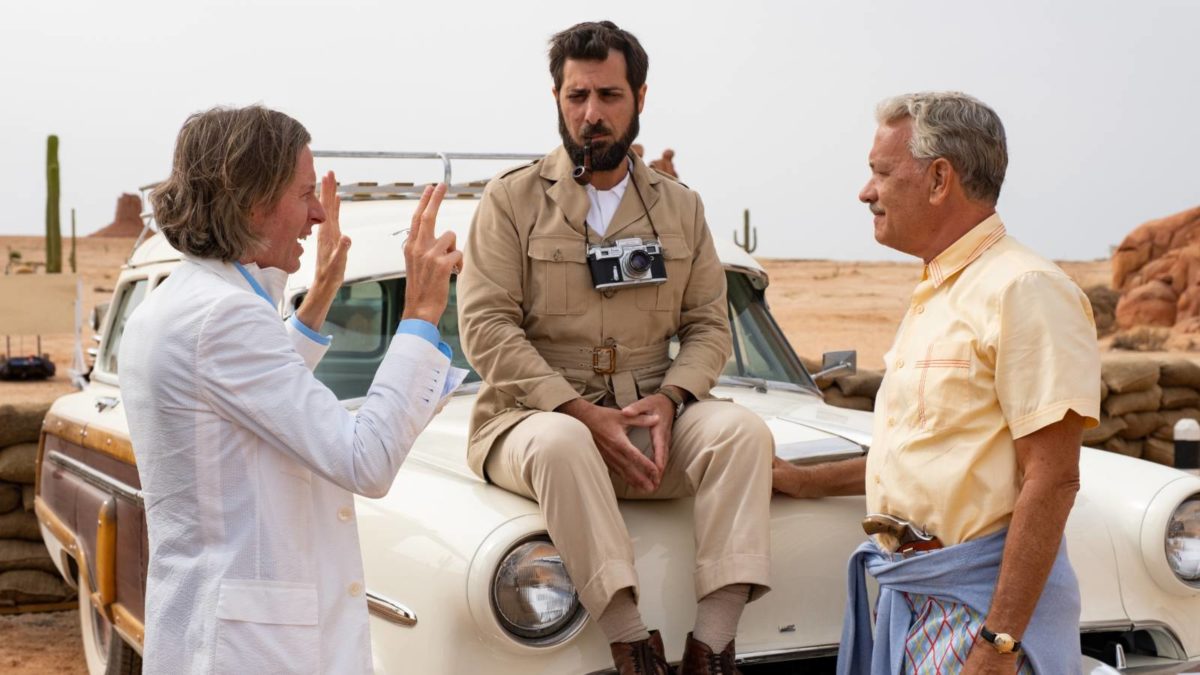
Wes Anderson’s Asteroid City is a tremendously inspired film, and Do No Detonate Without Presidential Approval: Inspirations for Wes Anderson’s Asteroid City is an accompanying release that is just as inventive. This collection of essays and photographs exists in the same headspace as Asteroid; as Anderson puts it in a conversation with editor Jake Perlin, unlike books that accompanied the release of The Grand Budapest Hotel and The French Dispatch, “This one is more about the atmosphere of it.” This universe, then, includes Molly Haskell on Ace in the Hole and Pauline Kael on Nashville, along with an excerpt from Bob Balaban’s Close Encounters of the Third Kind journal (Spielberg’s film is also covered in an essay from Matt Zoller Seitz) and vintage pieces from Jonas Mekas and Lillian Ross. Clearly compiled with great care, Do Not Detonate enhances our understanding of a deliciously wise film.
Perplexing Plots: Popular Storytelling and the Poetics of Murder by David Bordwell (Columbia University Press)
New work from David Bordwell is always welcome. His latest, a study of the narrative techniques wielded by the likes of Patricia Highsmith and Alfred Hitchcock, is wildly illuminating. Of particular interest is his analysis of “domestic suspense”––everything from 1958’s The Hours Before Dawn and The Hand That Rocks the Cradle to Gone Girl and The Girl on the Train. With the latter films, Bordwell is also interested in the perspectives presented in the books upon which the films were based. “What is exceptionally clever about [author Gillian Flynn’s] Gone Girl is that its central twist replaces the murderous-husband scheme with a revelation of Amy as a spider woman,” Bordwell writes. “[N]ow that we know Amy’s true nature, the novel can launch an ingenious new spiral of action.”
Corman/Poe: Interviews and Essays Exploring the Making of Roger Corman’s Edgar Allan Poe Films, 1960-1964 by Chris Alexander (Headpress)
If you have recently watched any of the 1960s gems included in the Criterion Channel’s “Grindhouse Gothic: Roger Corman Directs Edgar Allan Poe” lineup, Corman/Poe is a perfect follow-up. The book explores all of the filmmaker’s Poe adaptations, from 1960’s The Fall of the House of Usher to 1964’s The Tomb of Ligeia––eight films, in total. Included here are elements from author Chris Alexander’s many conversations with Corman over the past 20 years. There are countless memorable details; my favorite is Corman describing how Jack Nicholson, who “was young and understood ‘The Method,’” worked so well with Peter Lorre in The Raven: “If you watch the picture, you will notice that Jack is constantly poking and pulling at Peter’s clothes, tugging at his buttons and pulling stray threads and whatnot off of him, with Peter constantly slapping his hand away. The two of them had come up with the idea that Peter’s character was deeply ashamed and annoyed by his son, while Jack idolized his father. It added so much humor and personality to the picture and that was all credit to Jack and Peter.”
Unlikeable Female Characters: The Women Pop Culture Wants You to Hate by Anna Bogutskaya (Sourcebooks)

London-based film programmer, writer, and broadcaster Anna Bogutskaya has crafted an insightful and very, very funny examination of characters who fall under what she calls “the nine tropes of unlikable female characters: the Bitch, the Mean Girl, the Angry Woman, the Slut, the Crazy Woman, the Psycho, the Trainwreck, the Shrew, and the Weirdo.” In addition to her cogent analysis of works as diverse as Baby Face, The Last Seduction, and Titane, Bogutskaya also reveals her personal connections with these women. Thus Unlikable Female Characters both enhances our understanding of some of culture’s most complicated figures and bonds the reader with Bogutskaya herself. “Nobody wanted to be the weird girl in school,” she writes near the book’s end. “I did. I always gravitated toward the weird girl or was the weird girl.” Ultimately, the author has crafted a book that deserves to be considered an essential text.
Considering five titans of cinema
It seems appropriate to discuss new books on five key filmmakers in unison, as all texts are written with freshness, honesty, and stylistic verve.
Fassbinder Thousands of Mirrors by Ian Penman (Semiotext(e)) is both an appreciation and analysis of the late Rainer Werner Fassbinder and a quasi-memoir for author Penman. His honesty is refreshing (“OK, I’ll admit it … watching some of [Fassbinder’s] films again has been a painful experience”), and his insights are vast. He draws our attention beyond Fassbinder’s films, to the man’s complex (to say the least) personal life and his representation in the works of others, e.g. 1982 documentary The Wizard of Babylon. Penman remembers seeing the original version, which included an interview shot just hours before Fassbinder’s death. Watching the doc now he sees “someone letting themselves be seen without any of the usual baffles or guards.”
Frederick Wiseman is still quite active at 93; his latest documentary Menus — Plaisirs Les Troisgros will screen at TIFF next month. Voyages of Discovery: The Cinema of Frederick Wiseman by Barry Keith Grant (Wallflower Press) covers the entirety of his career. This is a revised edition of a book first published in 1992. “At that time, Wiseman had made twenty-five feature-length documentaries,” Grant writes. “Since then Wiseman has made an astonishing twenty more films.” The work of another legendary figure, the late Hollis Frampton, is studied in Hollis Frampton: Navigating the Infinite Cinema by Michael Zryd (Columbia University Press). This authoritative guide to the avant-garde filmmaker/photographer/theorist has been needed for years; finally, 40 years after Frampton’s death, comes this comprehensive look at his life and career.
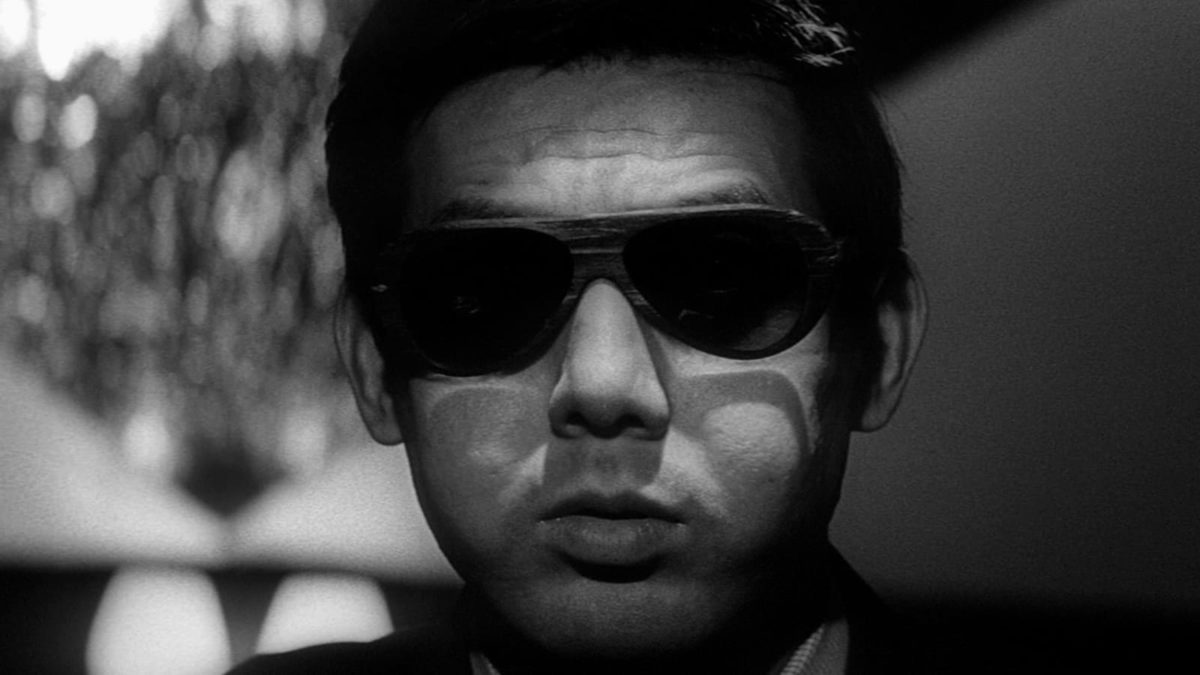
A Criterion Channel go-to of mine is Suzuki Seijun’s Branded to Kill, and it is one of the classics analyzed in Negative, Nonsensical, and Non-Conformist: The Films of Suzuki Seijun by Peter Yacavone (Univ of Michigan Press). In addition to closely reading his films, Yacavone analyzes the director’s fascinating path to icon status. “In 1958, Suzuki Seitarō was a thirty-five-year-old, lower-ranking, critically unrecognized contract director at Nikkatsu studios, despite the fact that he had already made fifteen feature-length program pictures,” Yacavone notes. “Forty-five years later, in 2003, the octogenarian Suzuki was still directing films, long after the economic collapse of the Japanese studio system; he had won every major Japanese film award and significant international awards.” Note that the book is available here as a free PDF download. In addition, the hardcover and paperback can be purchased here.
Lastly, Repulsion by Jeremy Carr (Auteur Publishing in partnership with Liverpool University Press), which was released back in August 2021, is another strong entry in the “Devil’s Advocate” series of horror classics. This is an intelligent and brisk read that makes illuminating connections to films from throughout Polanski’s career, including later works like Bitter Moon and The Ninth Gate.
For kids:
Obviously, Spider-Man: Across the Spider-Verse is not strictly a kids film; while young folks dig it, the animated epic is just as effective for adults. Both audiences will enjoy Spider-Man: Across the Spider-Verse: The Art of the Movie by Ramin Zahed (Abrams Books), an in-depth look at the design process. It also offers a glimpse of many of the Spideys seen for just seconds (or less) onscreen; the “background villains” section of the book is wonderful, as is this description of Hobie Brown, a.k.a. Spider-Punk: “You can describe him as [a] cross between Iggy Pop, Bad Brains, and Spider-Man.” Best of all? Artist Jeff Koons, whose iconic “Balloon Dog” makes a memorable cameo in the film, contributes the foreword. “Spider-Man: Across the Spider-Verse reinvents the classic comic with a contemporary twist,” Koons writes, “which includes growth, representation, and inclusion, establishing everlasting greatness for the iconic Spider-Man characters but also for us — the fans.”
To put it mildly, The Flash was not as well-received as Across the Spider-Verse. However, it did offer some charms for this viewer and my 13-year-old, chiefly the performances of Ezra Miller and Michael Keaton. The Flash: The Official Visual Companion: The Scarlet Speedster from Page to Screen by Randall Lotowycz (Insight Editions) is a nice breakdown of the character’s history and how the film referenced past incarnations. It also offers a closer look at Wayne Manor, which in reality is Knebworth House in Stevenage.
Lastly, my son finds just about every LEGO character encyclopedia worth owning, and LEGO Harry Potter Character Encyclopedia: New Edition by Elizabeth Dowsett (DK) is no exception. The style is simple––all the noteworthy characters, from A to Z, along with a breakdown of the LEGO sets that feature them. This new edition also comes with a rare Rita Skeeter mini-figure; finally, Miranda Richardson in LEGO form!
New music books
Recent releases chart the careers of one of America’s most reliable touring bands and a cult icon whose life ended much too soon.
There has always been something cinematic about the Hold Steady, and that sense of rough-and-tumble beauty is lovingly captured in The Gospel of The Hold Steady: How a Resurrection Really Feels by Michael Hann and The Hold Steady (Akashic Books). “We are not household names, but our small flame burns extremely hot,” writes frontman Craig Finn in the book’s introduction. “Our fan base is as committed and dedicated as any fan base in rock and roll.” Some members of that fan base contribute essays to How a Resurrection Really Feels, among them Rolling Stone’s Rob Sheffield. But the most resonant words come from the band, who describe the creation of albums like The Hold Steady Almost Killed Me and attempt to rationalize their place in the popular music landscape. “For me, a big part of this is just to keep working,” says Finn. “That’s really important to me; that’s what I want to do.
Johnny Thunders: In Cold Blood: The Official Biography: Revised & Updated Edition by Nina Antonia and Mike Scott (Jawbone Press) is a much more somber read. The sobering portrait of the New York Dolls legend was first published in 1987, before Thunders’ 1991 passing. “Perhaps it is only in death that we can grasp a person’s totality,” writes author Nina Antonia in a post-script from January 2023. “Johnny Thunders has now entered the realm of perpetual mystique, and his reach today is greater than ever.” Indeed, thanks to the ongoing appreciation of the New York Dolls, the use of Thunders’ solo works like “You Can’t Put Your Arms Around a Memory” in film (most notably Scorsese’s Bringing Out the Dead) and Antonia’s In Cold Blood, Thunders is more appreciated now than at any point during his short life.
Quick hits
In an effort to cover as many noteworthy books as possible, let’s take a brief run through some new and recent releases that deserve to be on your radar.

It has been a rocky few years for Warner Bros., although Barbie has made many forget the issues involving Max and other entities. There is no debating the studio’s importance, of course. Mark A. Vieira’s Warner Bros.: 100 Years of Storytelling (Running Press) is a photo-heavy, surprisingly comprehensive look at Warner Bros.’ first century; mentions of The Last of Sheila, Performance, and Akira Kurosawa’s Dreams were unexpected, to say the least, but very appreciated. All told, this is an enjoyable and very well-written coffee table book.
Why It’s OK to Love Bad Movies by Matthew Strohl (Routledge) is a smart, humor-filled consideration of the joys of Troll 2 and Battlefield Earth. Author Strohl also wrestles with the career of Nicolas Cage: “[T]he Nicolas Cage whom everyone loves and the Nicolas Cage whom so many people mock are the same Nicolas Cage––intrepid experimentalist and trampler of received norms. It’s so hard to determine if he’s good or bad because he’s both and neither: he’s good-bad and he’s great.”
Award-winning cartoonist Sammy Harkham’s Blood of the Virgin (Pantheon) is a somber, ’70s-set graphic novel that would make a fantastic animated film. It follows the story of a struggling immigrant editor and fledgling screenwriter named Seymour, whose infant is invariably wailing and whose wife seems ready to collapse with stress at any moment. Harkham brilliantly captures the feel of filmmaking on the fringes of Hollywood, as well as the ever-present headaches of being a young parent. Virgin is surely a downer, but also thrillingly alive.
Similarly downbeat is The Farrows of Hollywood: Their Dark Side of Paradise by Marilyn Ann Moss (Skyhorse), a gossipy look at a family whose history is almost incomprehensibly messy. No one comes off well here, but this well-researched book will be of great interest to lovers of old Hollywood and those still haunted by the Mia Farrow-Woody Allen saga.
Eddie Muller’s Noir Bar: Cocktails Inspired by the World of Film Noir by Eddie Muller (Running Press/Turner Classic Movies) is a treat for anyone with bitters in the house and a love of TCM. As always, Muller writes with wit and great cheer, and the book is bursting with drinks that sound positively intoxicating. If you do not desire a Sunset Blvd. “Champagne Cocktail” after reading Noir Bar, I don’t know what to tell you.
The best title in this column is certainly Hi Honey, I’m Homo!: Sitcoms, Specials, and the Queering of American Culture by Matt Baume (Smart Pop), which traces how LGBTQ+ characters went from being hinted at (hello, Bewitched) to the prominent on series like Soap in the ’70s and, eventually, at the forefront of shows like Modern Family and Will & Grace.
And Reach: Hard Lessons and Learned Truths From a Lifetime in Television by Arthur Smith (Blackstone Publishing) is a fine account of how the veteran producer of shows like American Ninja Warrior and Hell’s Kitchen achieved success in show business. It’s an inspiring read, and Smith smartly explains how he was able to “reach beyond what I ever thought possible.”
New to 4K and Blu-ray
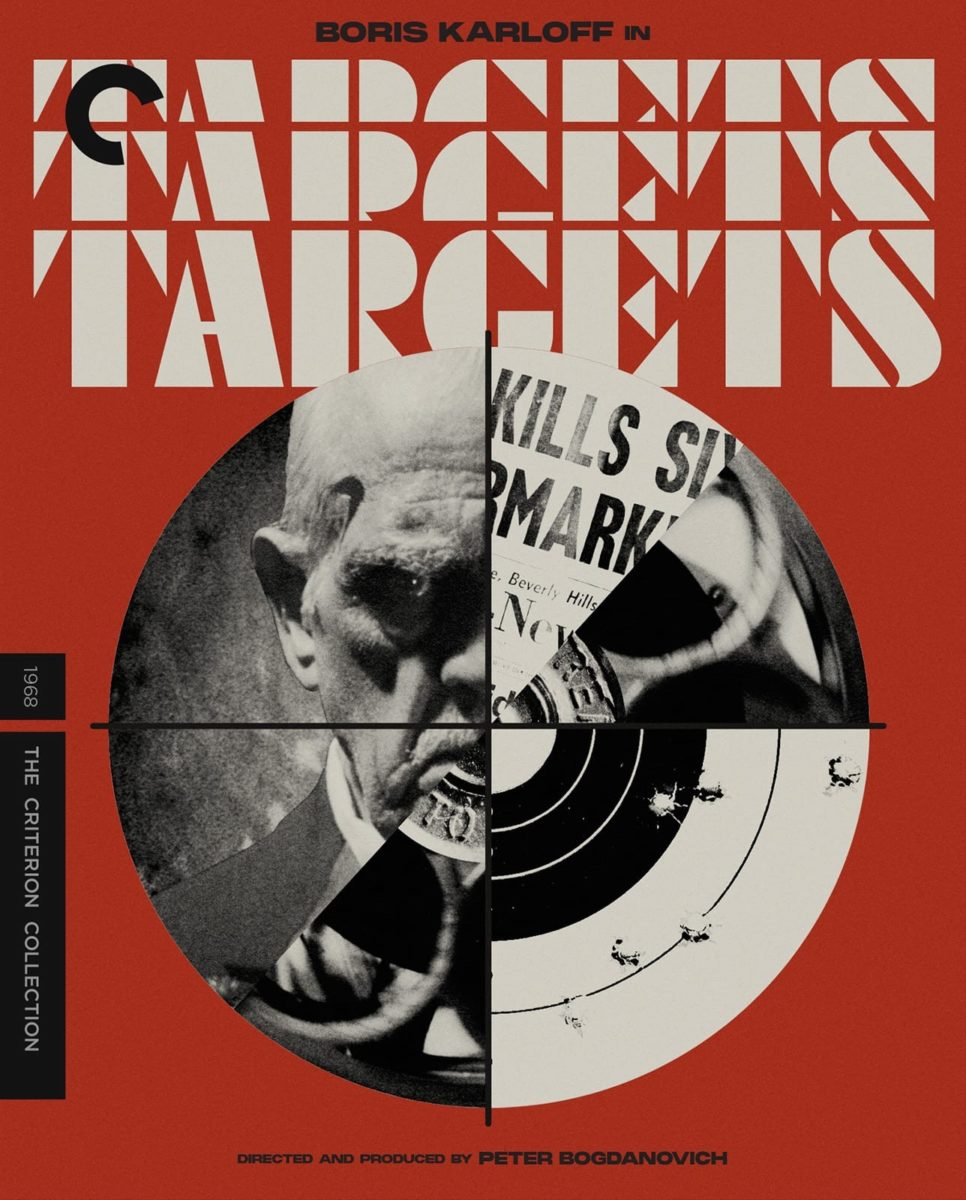
In keeping with our theme of cinematic heavyweights, there are a number of recent 4K and Blu-ray releases that ought to be considered must-owns. First is a trio from Criterion, starting with Peter Bogdanovich’s eerie, prescient 1968 chiller, Targets. This clever melding of the story of a Charles Whitman-like killer with footage of an aged Boris Karloff is a remarkably assured debut feature for the programmer-turned-filmmaker. In his booklet essay, critic Adam Nayman describes Targets as “a film that serves less as an analysis than as a tissue sample of a decade defined by long-distance and increasingly high-profile gun violence.” Criterion follows its recent releases of Terry Gilliam’s The Adventures of Baron Munchausen and The Fisher King with his stupendous 1981 fantasy, Time Bandits. The bonus features are plentiful, including an essay from critic David Sterritt. Martin Scorsese’s After Hours might be the most eagerly anticipated Criterion release of 2023. The 1985 one-night-in-Soho cult classic has, for me, become a Scorsese favorite in recent years. And this is the release it deserves: featuring a new chat between Scorsese and Fran Lebowitz, audio commentaries, and a fine making-of documentary. Best of all is the film itself, helmed with adrenalized glee by Scorsese and featuring a never-better Griffin Dunne.
Scorsese’s pal and frequent collaborator Robert De Niro is the star of John Frankenheimer’s Ronin, out now in 4K thanks to Kino Lorber. The 1998 Cold War thriller features a stacked cast and one of the finest car chases ever filmed. Speaking of car chases: Kino Lorber has also brought us William Friedkin’s ultra-stylish To Live and Die in L.A. The film has seen admirers grow since its release in 1985, and no wonder: this is one of Friedkin’s best, and watching it again just days after his death seems a fitting tribute to an all-timer.
